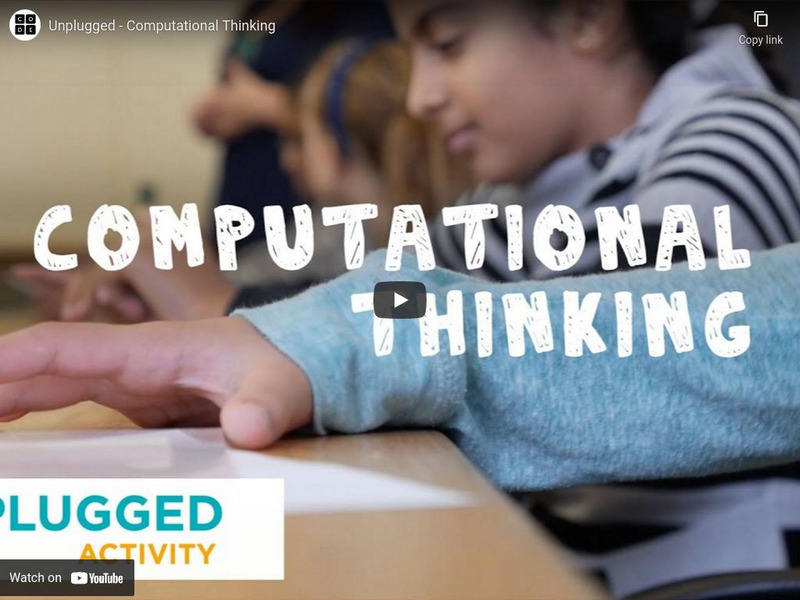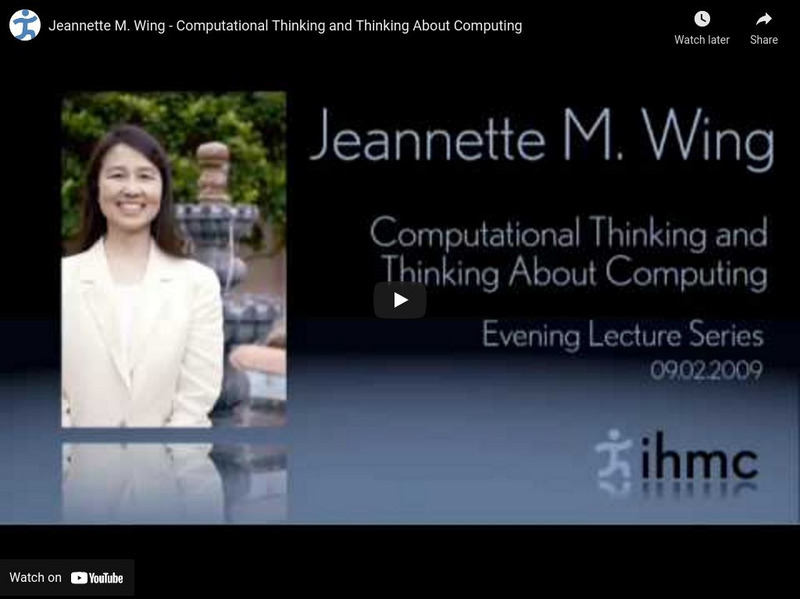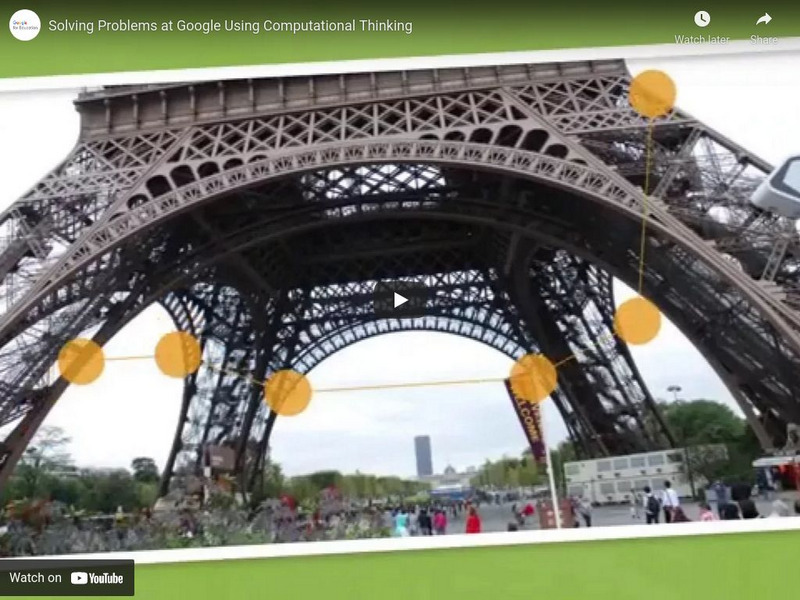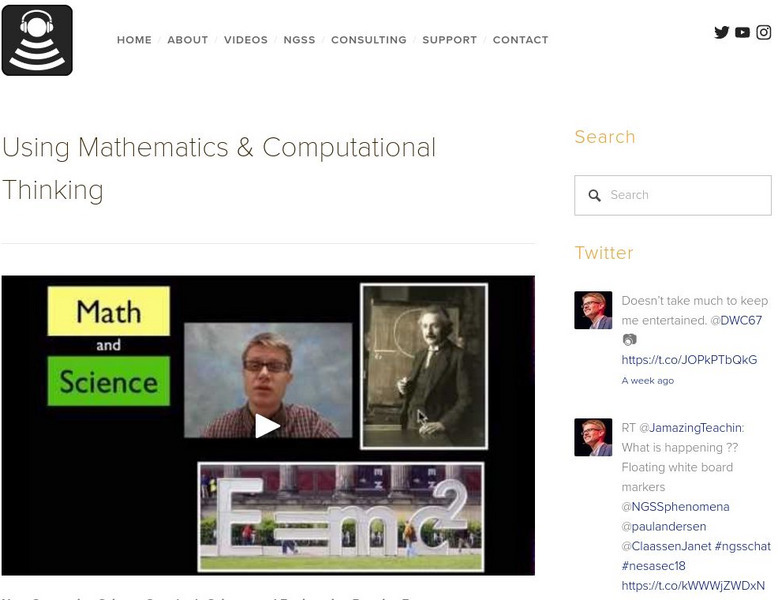Hi, what do you want to do?
Bozeman Science
Practice 5 - Using Mathematics and Computational Thinking
Paul Andersen explains how mathematics and computational thinking can be used by scientists to represent variables and by engineers to improve design. He starts by explaining how mathematics is at the root of all sciences. He then...
Curated Video
Computational thinking
Pupil outcome: I can use computational thinking techniques to help solve problems. Key learning points: - Computational thinking is a systematic approach to solving problems. - Decomposition is used to break down a large problem into...
Brainwaves Video Anthology
Jane Krauss - Computer Science for All A Few Reasons Why
Jane Krauss is a teacher, author and consultant who does curriculum and program development designed to increase participation of girls and other underrepresented groups in computer science. She will gladly tell you why computational...
Brainwaves Video Anthology
Stephen Wolfram - Computational Thinking
Stephen Wolfram, (born August 29, 1959, London, England), English physicist and author best known for his contributions to the field of cellular automata and the development of Mathematica, an algebraic software system, and Wolfram...
Other
Code Studio: Computational Thinking: Unplugged: Computational Thinking
This teacher tutorial provides educators an overview of a lesson in computational thinking without any use of computers. Clicking on the link leads to the full lesson plan. [1:35]
Rumbus Animation
Bbc Learning: What Is Coding
What is computer coding? This simple animation explains and illustrates this concept to young learners. [1:08]
Code.org
Code Studio: Flappy Bird
In a few minutes, with Code.org's simple drag-and-drop tutorials students can make their own Flappy game from any web browser or tablet, and share it instantly with friends. [1:33]
Other
Ihmc: Computational Thinking and Thinking About Computing
Jeannette M. Wing, Assistant Director for Computer and Information Science and Engineering, discusses how, like reading writing and math, computational thinking skills will be a fundamental skill used by everyone in the world. [1:05:58]
Microsoft
Microsoft Learning: What Is Coding?
Learn what a computer program is through the Hour of Code, a nationwide initiative to introduce millions of students to one hour of computer science and computer programming. [1:15]
Other
Youtube: Design Course: Flat Mobile App Design in Photoshop Cc Weather App
Learn how to design a beautifully flat mobile app design for a fictional weather app in Adobe Photoshop CC. Then learn how to take the final design and place it into a 3D perspective phone.
Other
Learn to Program: You Can Code: Java vs C++
A discussion of the similarities and differences between Java and C++. The pros and cons of each language are demonstrated through example as well. [6:13]
Other
Google for Education: Solving Problems at Google Using Computational Thinking
Find out how Google street view engineers use computational thinking to solve problems. [3:44]
Other
Youtube: Techy Help: Should I Learn Java or C++ for Games?
Find out some key differences between the two programming languages Java and C++. [2:08]
Other
Iste: Computational Thinking: A Digital Age Skill for Everyone
Computational thinking gives today's students the ability to recognize when and how technology can boost their own critical-thinking, creative and problem-solving skills in order to find innovative solutions to real-world problems. [3:47]
Other
Derek Banas: Java Programming
By popular request, this Java programming tutorial teaches all of the core knowledge needed to write Java code in thirty minutes. [34:30]
Other
Code Studio: Computational Thinking: Graph Paper Programming:my Robotics Friends
This teacher tutorial provides educators an overview of a lesson in graph paper computer programming without any use of computers. Clicking on the link leads to the full lesson plan. [1:07]
University of Canterbury
University of Canterbury: Cs Unplugged: Videos
This one-hour introduction communicates to children the topic of computer science. Each additional video shows students demonstrating different concepts in computational thinking.
National Science Foundation
National Science Foundation: How Does Resolution Factor Into Computational Models?
How does resolution factor into computational models? Marsha Berger, a professor at New York University Courant Institute of Mathematical Sciences, answers the question on this edition of Ask a Scientist. [1:09]
PBS
Pbs Learning Media: Technology Dissection
What happens when you combine "technology" and "dissection?" At the McWane Science Center in Birmingham, AL, kids find out, by taking apart electronic gadgets to learn how they work. Kids can then put them back together or make new...
Bozeman Science
Bozeman Science: Using Mathematics & Computational Thinking
Paul Andersen explains how mathematics and computational thinking can be used by scientists to represent variables and by engineers to improve design. He starts by explaining how mathematics is at the root of all sciences.




















